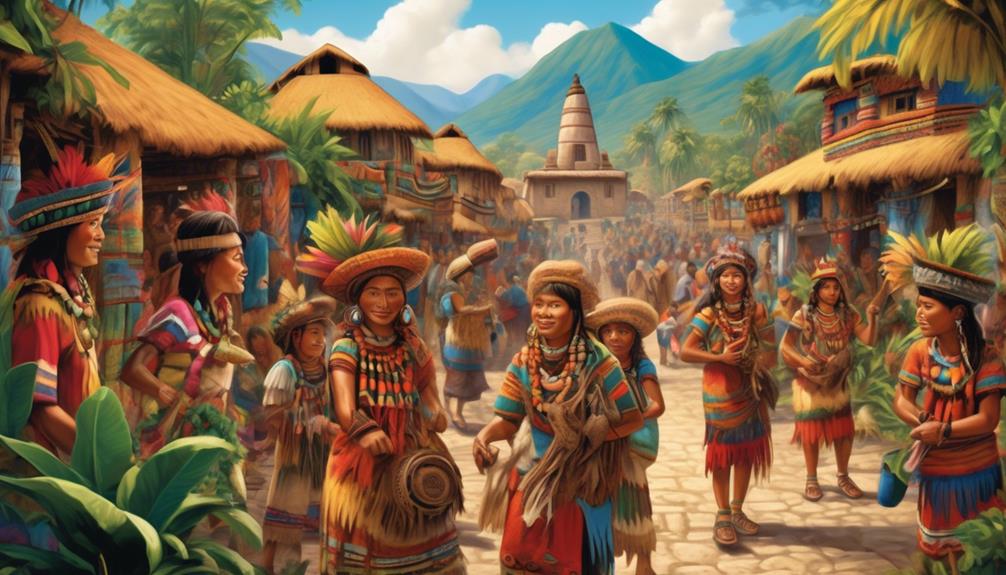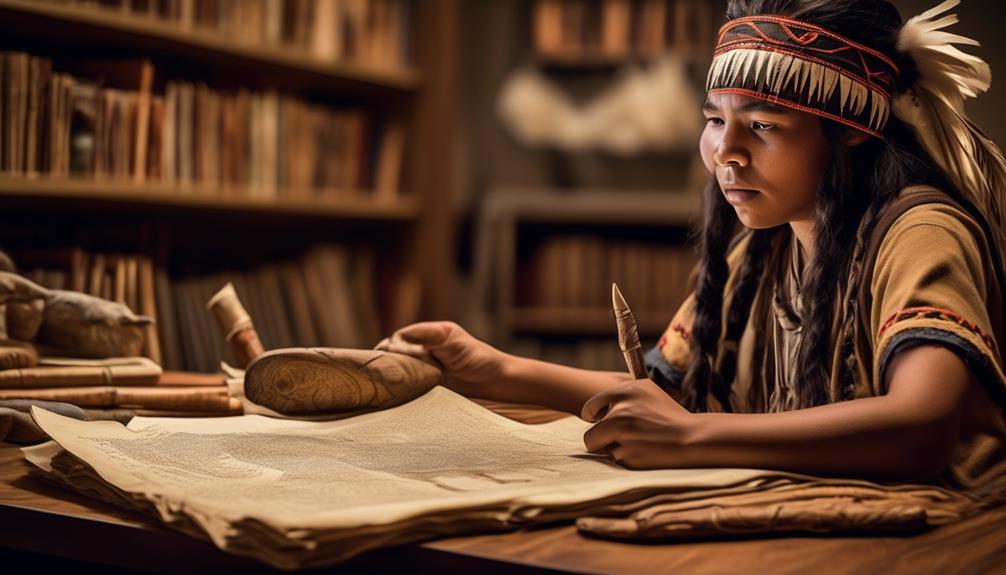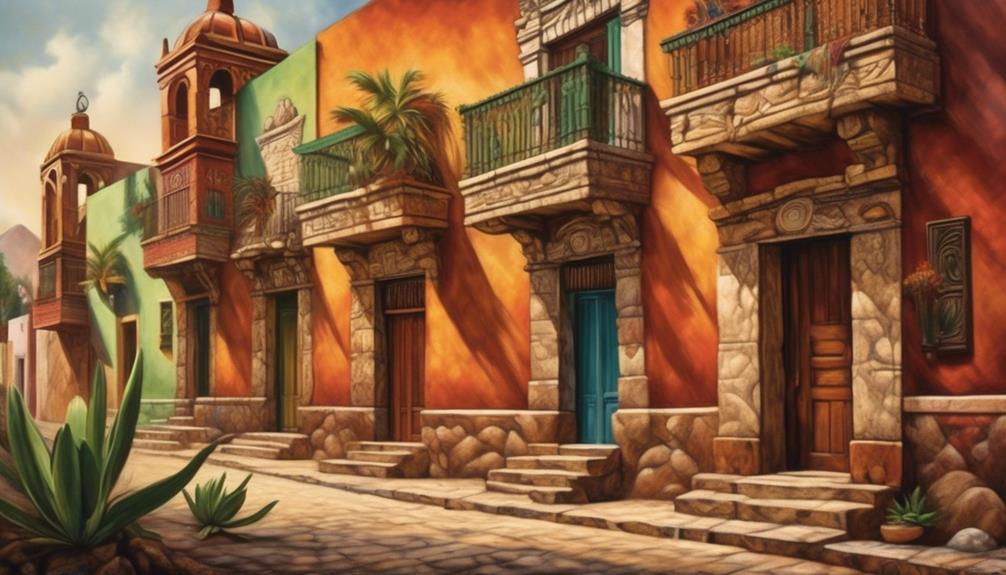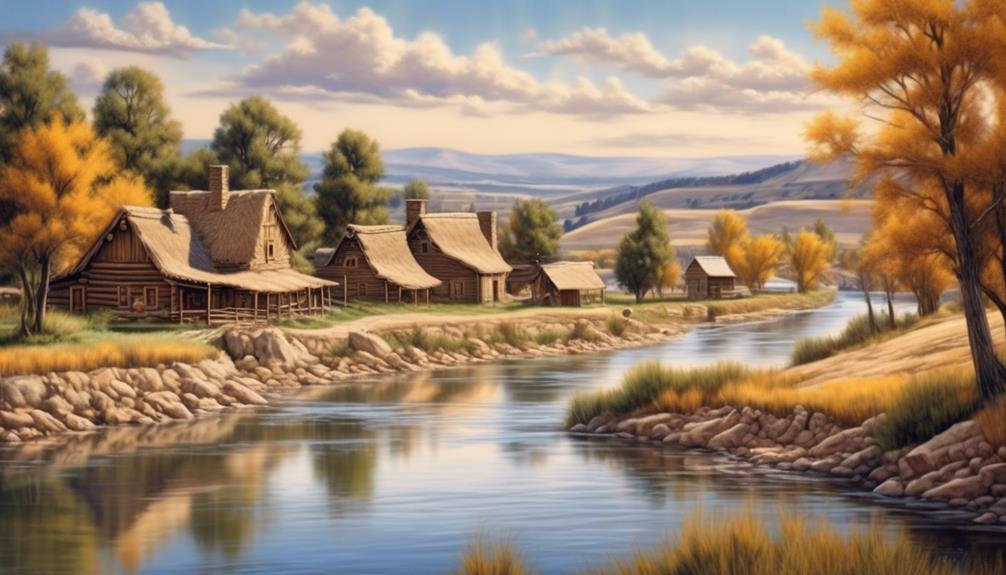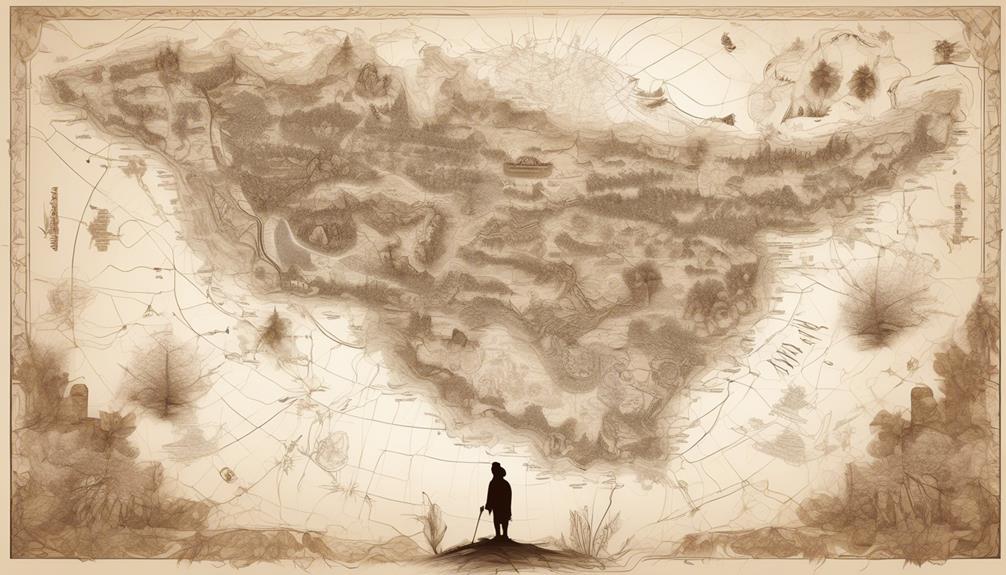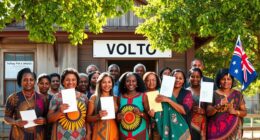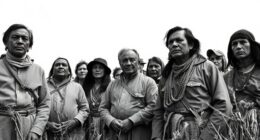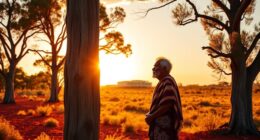Did you ever contemplate the way of life of indigenous communities before the Columbian Exchange?
There's a prevailing belief that these communities were isolated and stagnant, but what if I told you that the reality was far more complex and interconnected?
The truth about indigenous communities before the Columbian Exchange may surprise you, revealing a rich tapestry of agricultural practices, social structures, trade networks, and cultural diversity that laid the foundation for the world we know today.
As we explore this topic, we'll uncover the intricate web of connections that shaped these communities and continue to impact our modern world.
Key Takeaways
- Indigenous communities practiced diverse agricultural techniques and cultivated a variety of crops, including maize, potatoes, quinoa, and beans, to achieve well-balanced diets.
- Leadership roles were based on merit, and governance structures varied, ranging from tribal councils to the Inca Empire. Legal systems were rooted in oral tradition and community consensus.
- Trade and intertribal interactions played a significant role in indigenous communities, fostering economic exchanges, cultural diffusion, and the formation of diplomatic relationships.
- Cultural diversity and beliefs were evident in indigenous communities, with spiritual rituals, traditional artistry, and distinct social structures reflecting their unique beliefs and values. Communal living and respect for nature shaped cultural identities.
Agricultural Practices and Food Systems
Indigenous communities before the Columbian Exchange cultivated a diverse range of crops and developed intricate food systems to sustain their societies. Their agricultural techniques were advanced and varied, adapted to different environments and climates across the Americas. The dietary habits of these communities were shaped by their agricultural practices, with a heavy emphasis on locally grown produce.
Agricultural techniques employed by indigenous communities included advanced irrigation systems, crop rotation, and the use of natural fertilizers. Maize, potatoes, quinoa, and beans were staple crops cultivated using these techniques. The cultivation of these crops not only sustained the communities but also allowed for trade and the development of complex societies.
Dietary habits were diverse and rich in nutrients. The cultivation of different crops meant that indigenous communities had access to a wide variety of foods, leading to well-balanced diets. The combination of maize and beans, for example, provided a complete protein source. The intricate food systems developed by these communities were a testament to their deep understanding of the land and its resources.
Social Structures and Governance

Cultivating a diverse range of crops and developing intricate food systems not only sustained indigenous communities before the Columbian Exchange but also influenced their social structures and governance.
Leadership roles within indigenous communities were often based on merit, with individuals chosen for their wisdom, bravery, oratory skills, and ability to mediate conflicts. The governance structures varied widely, from tribal councils and chiefdoms to more complex systems like the Inca Empire's hierarchical bureaucracy.
Legal systems were often rooted in oral tradition and community consensus, where leaders facilitated dispute resolution and enforced communal norms. These systems were integral to maintaining social cohesion and order within indigenous societies.
The importance of reciprocity, mutual aid, and collective decision-making shaped the fabric of their governance. Furthermore, the interconnectedness of leadership roles, legal systems, and spiritual beliefs underscored the holistic nature of indigenous social structures.
Understanding these intricate dynamics provides insight into the resilience and adaptability of indigenous governance, offering valuable lessons for contemporary societies.
Trade and Interactions
Trade and interactions played a pivotal role in shaping the economic and cultural landscapes of pre-Columbian indigenous communities. Intertribal trade was a fundamental aspect of indigenous societies, facilitating the exchange of goods, technologies, and cultural practices. Diplomatic relationships between different tribes were established through trade, leading to the formation of alliances and the sharing of knowledge. This interconnected network of trade and diplomacy contributed to the development of complex economic systems and cultural diffusion across indigenous communities.
| Intertribal Trade | Diplomatic Relationships |
|---|---|
| Exchange of goods | Formation of alliances |
| Sharing of technologies | Knowledge sharing |
| Cultural practices | Mutual cooperation |
| Economic systems | Peace agreements |
| Cultural diffusion | Conflict resolution |
Indigenous communities engaged in a wide range of trade activities, including the barter system and the establishment of trade routes that spanned vast distances. These interactions were not only economic but also had significant social and cultural implications. The exchange of goods and ideas fostered a sense of interconnectedness and mutual dependence among different tribes, contributing to the rich tapestry of pre-Columbian indigenous societies.
Cultural Diversity and Beliefs

The interconnected network of trade and diplomacy among pre-Columbian indigenous communities not only facilitated the exchange of goods and technologies but also contributed to the rich cultural diversity and beliefs within these societies. This diversity was manifested in various spiritual rituals, traditional artistry, and social structures, reflecting the unique identities of different indigenous groups.
- Spiritual Rituals: These rituals were deeply ingrained in the daily lives of indigenous communities, serving as a means of connecting with the natural world and honoring their ancestors. The diversity of these rituals showcased the intricate belief systems and cosmologies that guided their societies.
- Traditional Artistry: Indigenous communities displayed remarkable artistic diversity, evident in their pottery, weaving, and other craftworks. These art forms weren't only aesthetically pleasing but also held deep cultural and spiritual significance, often depicting stories of creation, mythology, and daily life.
- Social Structures: The varied social structures and governance systems across indigenous communities reflected their distinct beliefs and values. These structures were built on principles of communal living, reciprocity, and respect for nature, shaping their cultural identities and beliefs.
The exploration of these elements reveals the intricate tapestry of cultural diversity and beliefs that existed among pre-Columbian indigenous communities.
Environmental Connections and Sustainability
The environmental landscapes inhabited by pre-Columbian indigenous communities played a fundamental role in shaping their practices and fostering a sustainable way of life. Resource management was a cornerstone of their societal structure, as they had a comprehensive understanding of ecological balance. Indigenous communities were adept at utilizing natural resources in a manner that ensured the long-term sustainability of their environment. They maintained biodiversity through their land stewardship practices, recognizing the interconnectedness of all living organisms within their ecosystems. This approach allowed them to thrive without depleting their surroundings.
Indigenous communities employed various techniques to manage resources, such as rotational farming, agroforestry, and controlled burns, all of which contributed to maintaining a harmonious relationship with the environment. Additionally, their spiritual and cultural beliefs often reinforced the importance of preserving nature, leading to a deep sense of responsibility towards the land.
Frequently Asked Questions
How Did Indigenous Communities in the Americas View the Concept of Property and Land Ownership Before the Columbian Exchange?
Before the Columbian Exchange, indigenous communities in the Americas viewed land ownership as communal, guided by spiritual connections and traditional knowledge. They prioritized sustainable use over individual ownership. Trade networks facilitated exchange, reinforcing social hierarchies. This approach fostered cooperation and mutual benefit.
The concept of property was intertwined with respect for the land and its resources, emphasizing collective stewardship. This perspective on land ownership shaped the foundation of indigenous societies in the pre-Columbian era.
What Were the Common Gender Roles and Family Structures in Indigenous Communities Prior to the Columbian Exchange?
Before the Columbian Exchange, gender roles in indigenous communities were often distinct but not always rigid. Community structure and family dynamics were tightly interwoven, with a strong emphasis on interdependence and communal decision-making.
Social hierarchy varied across tribes but commonly revolved around leadership based on wisdom, strength, or spiritual guidance. These structures were deeply ingrained and influenced by cultural and environmental factors, shaping the overall fabric of indigenous societies.
Did Indigenous Communities Have Any Form of Written Language or Communication System Before European Contact?
Before European contact, indigenous communities ingeniously developed pre-contact communication systems. Through indigenous education, storytelling, and oral traditions, they preserved and transmitted knowledge across generations without written language.
These intricate systems fostered a rich cultural tapestry, showcasing the depth of indigenous understanding and innovation. This oral tradition was a powerful means of learning and preserving history, traditions, and values, showcasing the depth and complexity of indigenous cultures before the Columbian Exchange.
What Types of Artistic and Cultural Expressions Were Prevalent in Indigenous Communities Before the Columbian Exchange?
Before the Columbian Exchange, indigenous communities had rich and diverse artistic expressions, cultural traditions, storytelling, ceremonial practices, community rituals, and spiritual beliefs.
Their indigenous craftsmanship, traditional music, and dance reflected their deep connection to the land and their vibrant cultural heritage.
These traditions were integral to their way of life, serving as a means of passing down knowledge, preserving history, and celebrating their identity as distinct and thriving communities.
How Did Indigenous Communities in the Americas Manage Natural Resources and Environmental Conservation Prior to the Arrival of European Settlers?
We were masters of natural resource management, utilizing sophisticated techniques to ensure environmental conservation. Our communities practiced sustainable agriculture, crop rotation, and forest management.
We understood the delicate balance of ecosystems and carefully regulated hunting and fishing to prevent depletion. Our respect for the land and its resources was ingrained in our cultural and spiritual beliefs, guiding us to live in harmony with nature for generations before the arrival of European settlers.
Conclusion
In conclusion, indigenous communities before the Columbian Exchange were deeply rooted in their agricultural practices and had developed complex food systems. They had diverse social structures and governance systems, engaged in trade and interactions with neighboring communities, and held a rich tapestry of cultural beliefs and traditions. Their environmental connections and sustainable practices were integral to their way of life.
How did the Columbian Exchange impact and reshape these intricate and interconnected indigenous communities?
